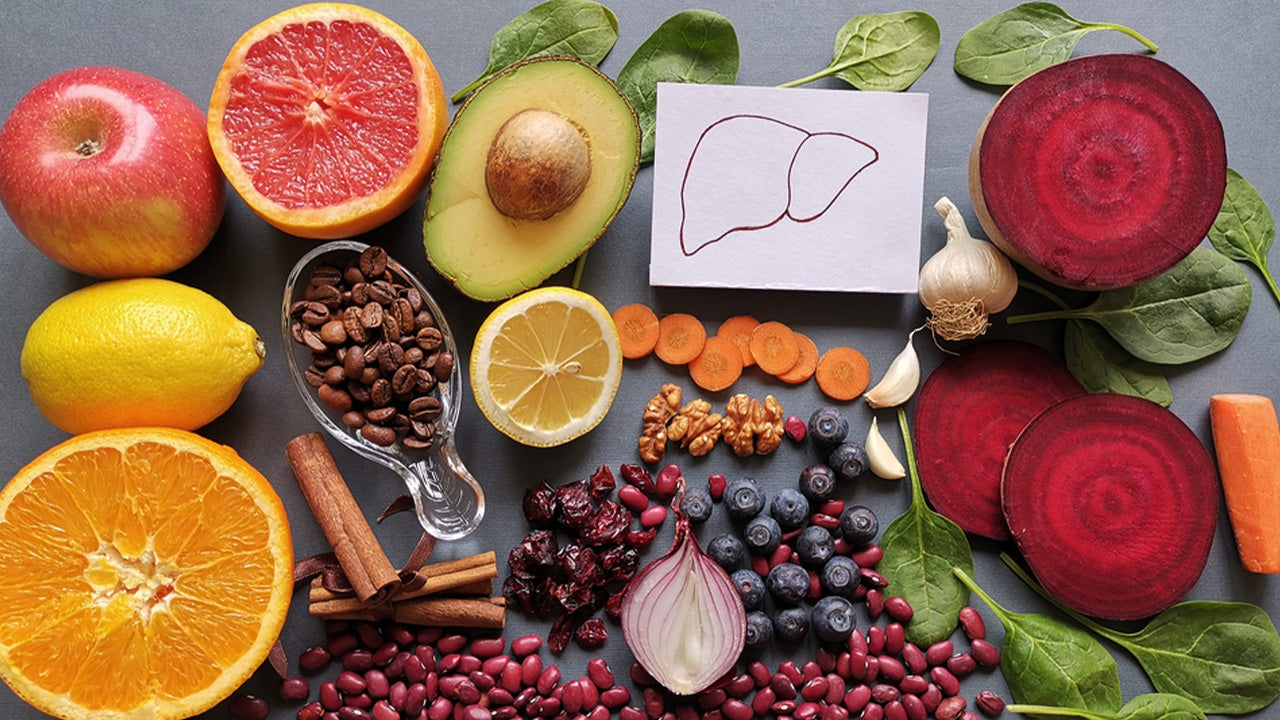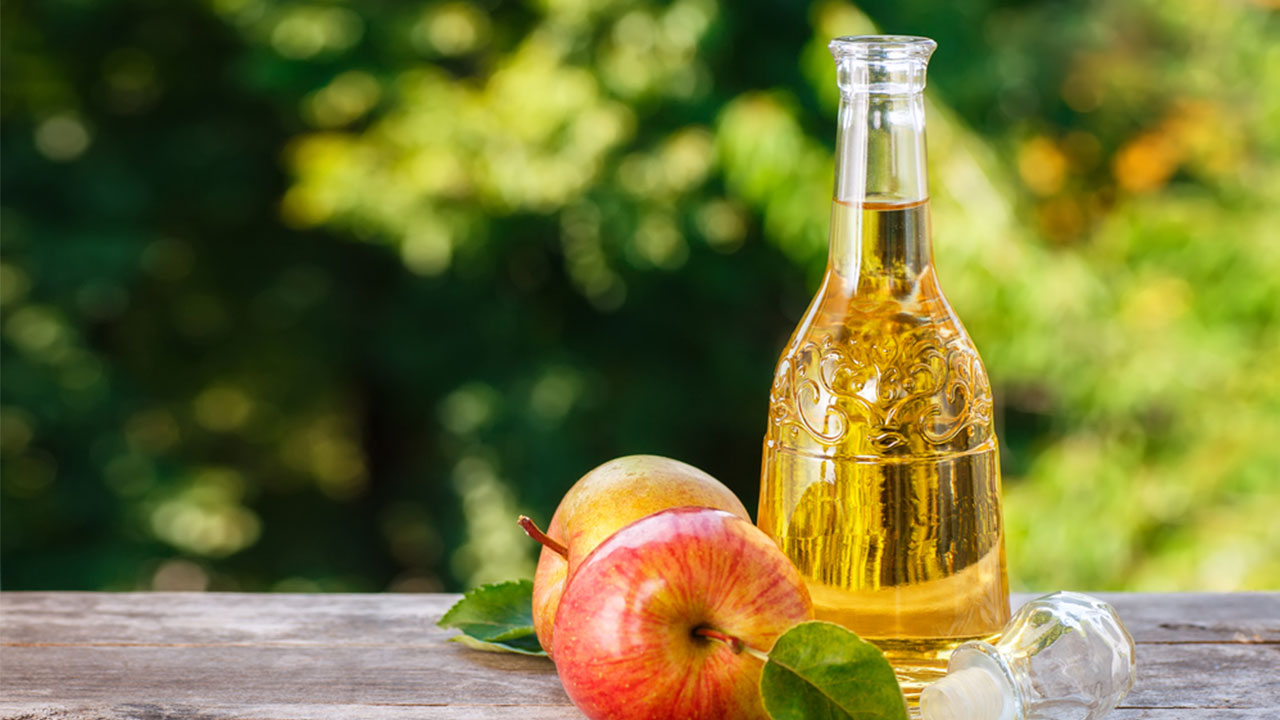Foods to Eat for Fatty Liver: A Liver-Loving Shopping List
 By: by Amino Science
By: by Amino Science

Fatty liver disease has two main culprits: drinking too much alcohol (alcoholic fatty liver disease) and eating too many calories (non-alcoholic fatty liver disease, or NAFLD), particularly when accompanied by an associated condition such as high cholesterol, obesity, or diabetes. Malnutrition and hasty weight loss have also been implicated in fatty liver disease. Both forms of the disease cause fat to build up in liver cells, and if left unchecked fatty liver leads to more severe liver damage, including nonalcoholic steatohepatitis (NASH), relentless liver inflammation and scar tissue, and an increased risk of liver cancer, failure, and transplant.
If you’ve been diagnosed with fatty liver there are dietary adjustments you can make to help reverse that diagnosis. The liver has a remarkable regenerative capacity, after all. Keep in mind that the symptoms of fatty liver disease don’t always manifest, so it’s a good idea to follow a healthy liver diet regardless. We have a shopping list full of foods to eat for fatty liver below (as well as nature’s most potent liver helper), but let’s first clear out your pantry and fridge of foods the liver isn’t so fond of.
Foods to Avoid for Fatty Liver
When it comes to foods to phase out for liver health, the guidelines follow the principles of other diet plans that work to protect against chronic conditions like heart disease, high blood pressure, and insulin resistance.
Limit or cut back entirely on:
- High-fat foods (saturated fats like red meat and trans fats)
- Salt
- Sugary foods and beverages like fruit juices
- High-fructose corn syrup
- Fried foods
- Processed foods
- Refined grains (white bread, white rice, and pasta)
- Raw or undercooked shellfish
- Alcohol
- Partially hydrogenated vegetable oils
Reducing your intake of these foods will help whittle away your waistline and reduce (and reverse!) your risk of fatty liver disease. According to the National Institute of Diabetes and Digestive and Kidney Diseases, losing 3-5% of your total bodyweight can lower the buildup of fat in your liver, and losing up to 10% of your bodyweight can help reduce liver inflammation (1).
Avoiding sugary foods and favoring complex carbohydrates also helps to keep your blood sugar levels normal. High blood sugar levels increase fat buildup!
Foods to Eat for Fatty Liver
There’s no food group that’s off limits with a fatty liver diet. Choose from fiber-full whole grains, lean meats and fish, legumes, milk, eggs, and oils! A fatty liver diet is much like a Mediterranean diet built around plant-based, antioxidant-rich foods, oily fish, and moderate portions of dairy, poultry, eggs, and fiber-rich carbs like quinoa and brown rice.
In addition to the liver-loving shopping list that follows, be sure to stay hydrated with water, which helps to promote liver function! And here are a few more liver tips: caffeine and omega-3 fatty acids lower abnormal liver enzymes, so bring on the coffee and healthy fats!
Fruits:
- Grapefruit
- Lemons
- Limes
- Apples
- Avocado
- Indian gooseberry
- Papaya
- Tomatoes
- Berries
- Olives
Herbs and Spices
- Garlic
- Turmeric
- Licorice root
- Dandelion
- Milk thistle
Veggies
- Beets
- Artichokes
- Brussels sprouts
- Cabbage
- Broccoli
- Spinach
- Onions
- Carrots
- Arugula
- Cauliflower
Nuts and Seeds
- Walnuts
- Almonds
- Flaxseeds
- Sunflower seeds
Beverages and Condiments
- Water
- Green tea
- Coffee
- Raw honey
Protein
- Lean cuts of meat and poultry without the skin
- Eggs
- Low-fat dairy products
- Fatty fish rich in omega-3 fatty acids (salmon and sardines)
Cooking oils with healthy fats
- Olive oil
- Avocado oil
- Coconut oil
Science’s Best Kept Liver Health Secret
Research shows that supplementation with essential amino acids can help you maintain a healthy weight and improve liver condition. Here are a few noteworthy findings.
Taking just 13 grams of essential amino acids twice a day for a month has been shown to lower excessive accumulation of lipids in the livers of people with mild to moderate alcohol use disorder even when no other nutritional changes occur and alcohol consumption stays the same (2).
Diets high in fructose have been linked to both obesity and fatty liver disease. Supplementing with essential amino acids can help prevent NAFLD even when fructose intake is high, which makes for a worthwhile nutritional intervention (3).
Amino acid supplementation can also help lower triglycerides that put your heart, liver, and other organs at risk (4).
If your aim is to lower liver fat and score As on your liver function tests at your next checkup, then essential amino acids in conjunction with a healthy diet can help. Amino Co scientists have put together a healthy liver cocktail of amino acids designed to not only protect your liver, but also improve lipid profiles and heart health. The amino acid profile is more refined than that of whey protein, and it’s less filling and lower calorie so it won’t affect appetite and will support your weight-loss goals. You can learn more about Amino Co’s liver supplement here.
Don’t Forget Lifestyle Changes
In addition to eating a balanced diet, consider adopting healthy lifestyle habits like regular exercise at least 3 times a week to keep blood sugar levels low, your heart healthy, and the pounds off your frame.
Stress is also a risk factor in fatty liver disease. Stress raises cortisol concentrations, which increases the amount of fat your body stores, so engage in stress-management activities like mindfulness and yoga.
To learn more about fatty liver disease and improving liver health, read this article.


Up to 25% off Amino
Shop NowTAGS: #liver
Join the Community
Comments (0)
Most Craveable Recipes





 833-264-6620
833-264-6620



















